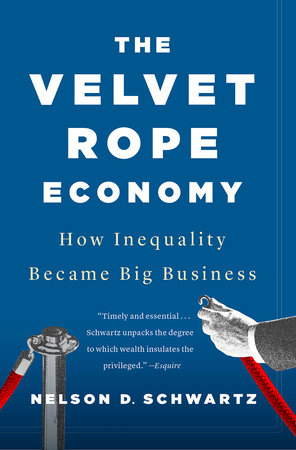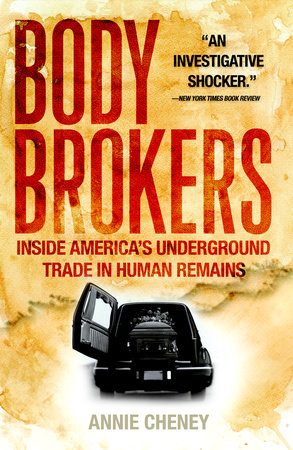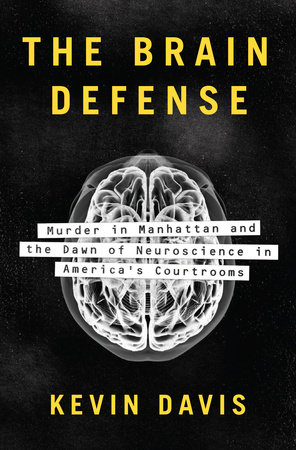

The End of Poverty
By Jeffrey D. Sachs
Foreword by Bono
By Jeffrey D. Sachs
Foreword by Bono
By Jeffrey D. Sachs
Foreword by Bono
By Jeffrey D. Sachs
Foreword by Bono
By Jeffrey D. Sachs
Read by Malcolm Hillgartner
By Jeffrey D. Sachs
Read by Malcolm Hillgartner

-
$20.00
Feb 28, 2006 | ISBN 9780143036586
-
Feb 28, 2006 | ISBN 9781101643280
-
Mar 13, 2008 | ISBN 9781429592260
829 Minutes
Buy the Audiobook Download:
YOU MAY ALSO LIKE

8 Ball Chicks

The Enough Moment

The Velvet Rope Economy

More Than Good Intentions

Our Guys

Kicking Ass and Saving Souls

Water Wars

Killing the Messenger

Body Brokers
Praise
“Jeffrey Sachs is that rare phenomenon: an academic economist famous for his theories about why some countries are poor and others rich, and also famous for his successful practical work in helping poor countries become richer. In this long-awaited, fascinating, clearly and movingly written book, he distills his experience to propose answers to the hard choices now facing the world.” —Jared Diamond, Pulitzer Prize-winning author of Guns, Germs, and Steel
“Book and man are brilliant, passionate, optimistic and impatient . . . Outstanding.” —The Economist
“If there is any one work to put extreme poverty back onto the global agenda, this is it.” —Publishers Weekly (starred review)
“Paul Wolfowitz should read Jeffrey Sachs’s compelling new book.” —Fareed Zakaria, Newsweek
“Professor Sachs has provided a compelling blueprint for eliminating extreme poverty from the world by 2025. Sachs’s analysis and proposals are suffused with all the practical experience of his twenty years in the field—working in dozens of countries across the globe to foster economic development and well-being.” —George Soros, financier and philanthropist
“Sachs proposes a many-pronged, needs-based attack . . . that is eminently practical and minimally pipe-dreamy . . . A solid, reasonable argument in which the dismal science offers a brightening prospect for the world’s poor.” —Kirkus
“This is an excellent, understandable book on a critical topic and should be required reading for students and participants in public policy as well as those who doubt the problem of world poverty can be solved.” —Mary Whaley, Booklist
Table Of Contents
“);} else { document.writeln(“”);} //–
"Jeffrey Sachs is that rare phenomenon: an academic economist famous for his theories about why some countries are poor and others rich, and also famous for his successful practical work in helping poor countries become richer. In this long awaited, fascinating, clearly and movingly written book, he distills his experience to propose answers to the hard choices now facing the world." ?Jared Diamond, Pulitzer Prize winning author of Guns, Germs and Steel and Collapse
“);} else { document.write(“”);} // —
He has been cited by The New York Times Magazine as "probably the most important economist in the world" and by Time as "the world’s best-known economist." He has advised an extraordinary range of world leaders and international institutions on the full range of issues related to creating economic success and reducing the world’s poverty and misery. Now, at last, he draws on his entire twenty-five-year body of experience to offer a thrilling and inspiring big-picture vision of the keys to economic success in the world today and the steps that are necessary to achieve prosperity for all.
Marrying vivid eyewitness storytelling to his laserlike analysis, Jeffrey Sachs sets the stage by drawing a vivid conceptual map of the world economy and the different categories into which countries fall. Then, in a tour de force of elegance and compression, he explains why, over the past two hundred years, wealth has diverged across the planet in the manner that it has and why the poorest nations have been so markedly unable to escape the cruel vortex of poverty. The groundwork laid, he explains his methods for arriving, like a clinical internist, at a holistic diagnosis of a country’s situation and the options it faces. Rather than deliver a worldview to readers from on high, Sachs leads them along the learning path he himself followed, telling the remarkable stories of his own work in Bolivia, Poland, Russia, India, China, and Africa as a way to bring readers to a broad-based understanding of the array of issues countries can face and the way the issues interrelate. He concludes by drawing on everything he has learned to offer an integrated set of solutions to the interwoven economic, political, environmental, and social problems that most frequently hold societies back. In the end, he leaves readers with an understanding, not of how daunting the world’s problems are, but how solvable they are-and why making the effort is a matter both of moral obligation and strategic self-interest. A work of profound moral and intellectual vision that grows out of unprecedented real-world experience, The End of Poverty is a road map to a safer, more prosperous future for the world.
On the web: http://www.earthinstitute.columbia.edu/endofpoverty/
“);} else { document.write(“”);} // —
The path from poverty to development has come incredibly fast in the span of human history. Two hundred years ago, the idea that we could potentially achieve the end of poverty would have been unimaginable. Just about everybody was poor with the exception of a very small minority of royals and landed gentry. Life was as difficult in much of Europe as it was in India or China. With very few exceptions, your great-great-grandparents were poor and most likely living on the farm. One leading economic historian, Angus Maddison, puts the average income per person in Western Europe in 1820 at around 90 percent of the average income of sub-Saharan Africa today. Life expectancy in Western Europe and Japan as of 1800 was probably about forty years.
There was little sense a few centuries ago of vast divides in wealth and poverty around the world. China, India, Europe, and Japan all had similar income levels at the time of European discoveries of the sea routes to Asia, Africa, and the Americas. Marco Polo, of course, marveled at the sumptuous wonders of China, not at its poverty. Cortés and his conquistadores expressed astonishment at the riches of Tenochtitlán, the capital of the Aztecs. The early Portuguese explorers in Africa were impressed with the well-ordered towns in West Africa.
Until the mid-1700s, the world was remarkably poor by any of today’s standards. Life expectancy was extremely low; children died in vast numbers in the now rich countries as well as the poor countries. Disease and epidemics, not just the black death of Europe, but many waves of disease, from smallpox and measles to other epidemics, regularly washed through society and killed mass numbers of people. Episodes of hunger and extreme weather and climate fluctuations sent societies crashing. The rise and fall of the Roman Empire, for Arnold Toynbee, was much like the rise and decline of all other civilizations before and since. Economic history had long been one of ups and downs, growth followed by decline, rather than sustained economic progress.
The Novelty of Modern Economic Growth
If we are to understand why vast gaps between rich and poor exist today, we need therefore to understand a very recent period of human history during which these vast gaps opened. The past two centuries, since around 1800, constitute a unique era in economic history, a period that the great economic historian Simon Kuznets famously termed the period of Modern Economic Growth, or MEG for short. Before the era of MEG, indeed for thousands of years, there had been virtually no sustained economic growth in the world and only gradual increases in the human population…;
“);} else { document.write(“”);} // —
Acknowledgements ix
Foreword by Bono xv
Introduction 1
-
Global Family Portrait 5
-
The Spread of Economic Prosperity 26
-
Why Some Countries Fail to Thrive 51
-
Clinical Economics 74
-
Bolivia’s High-Altitude Hyperinflation 90
-
Poland’s Return to Europe 109
-
Reaping the Whirlwind: Russia’s Struggle for Normalcy 131
-
China: Catching Up After Half a Millenium 148
-
India’s Market Reforms: The Triumph of Hope Over Fear 170
-
The Voiceless Dying: Africa and Disease 188
-
The Millennium, 9/11, and the United Nations 210
-
On-the-Ground Solutions for Ending Poverty 226
-
Making the Investments Needed to End Poverty 244
-
A Global Compact to End Poverty 266
-
Can the Rich Afford to Help the Poor? 288
-
Myths and Magic Bullets 309
-
Why We Should Do It 329
-
Our Generation’s Challenge 347
Works Cited 369
Further Reading 372
Notes 376
Index 385
21 Books You’ve Been Meaning to Read
Just for joining you’ll get personalized recommendations on your dashboard daily and features only for members.
Find Out More Join Now Sign In














